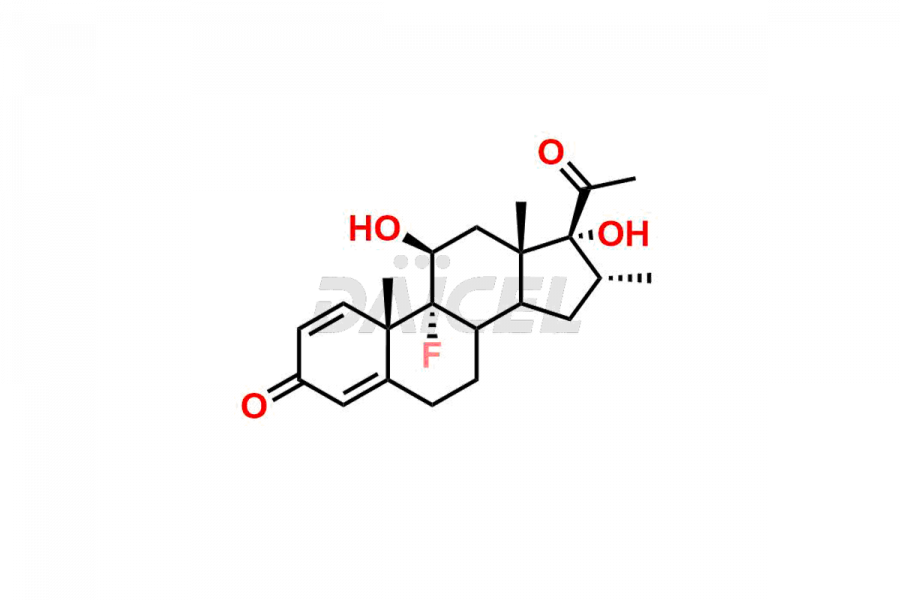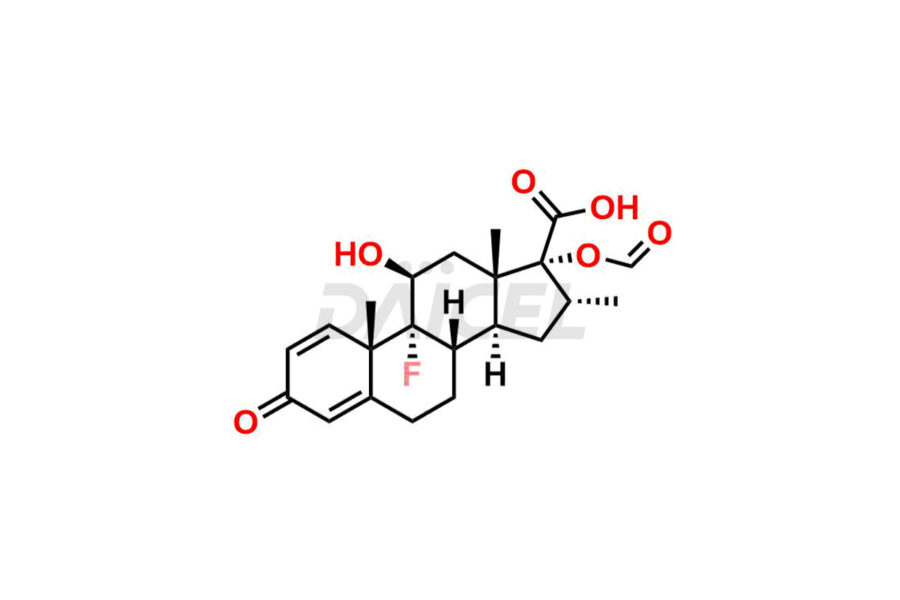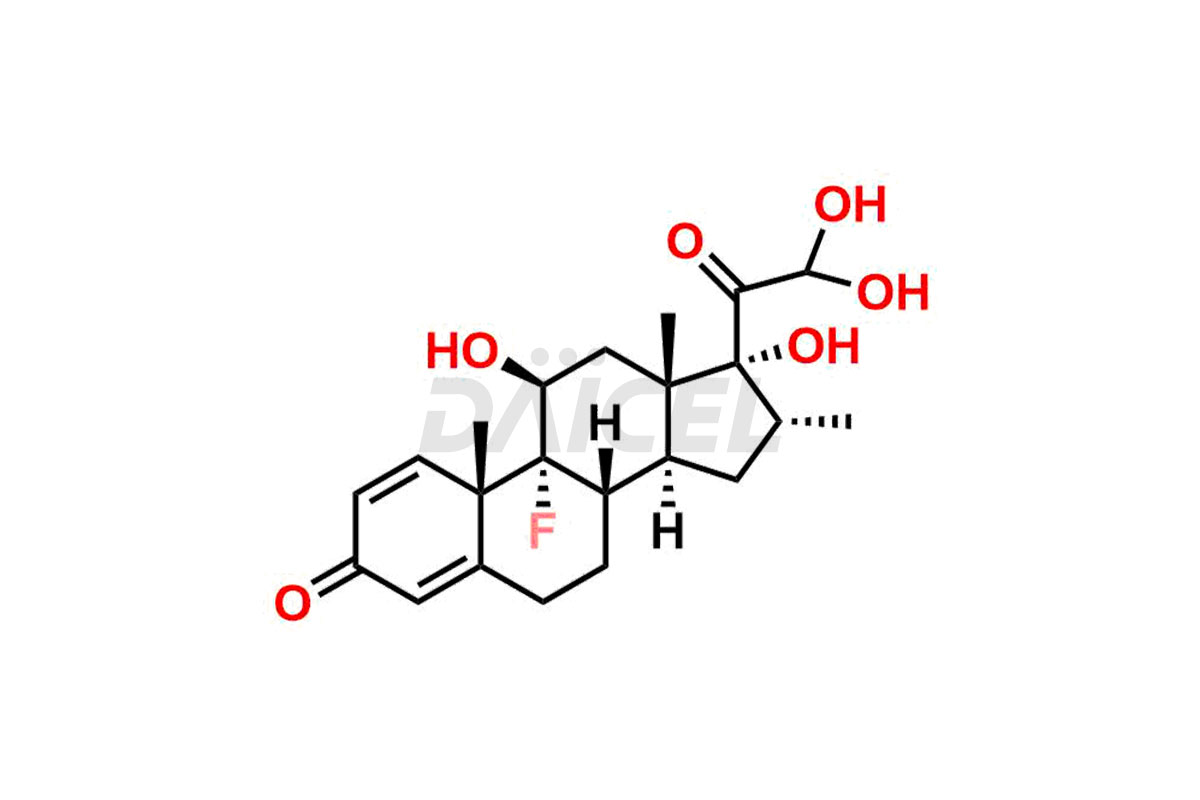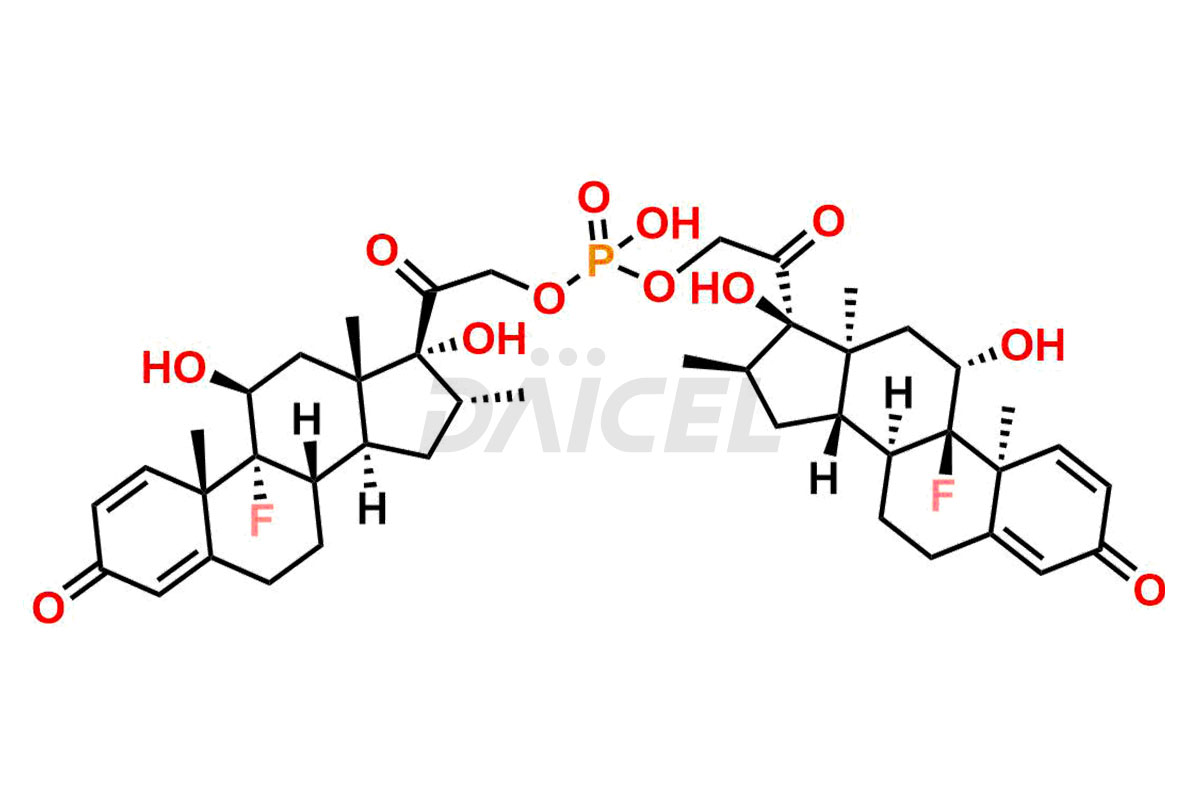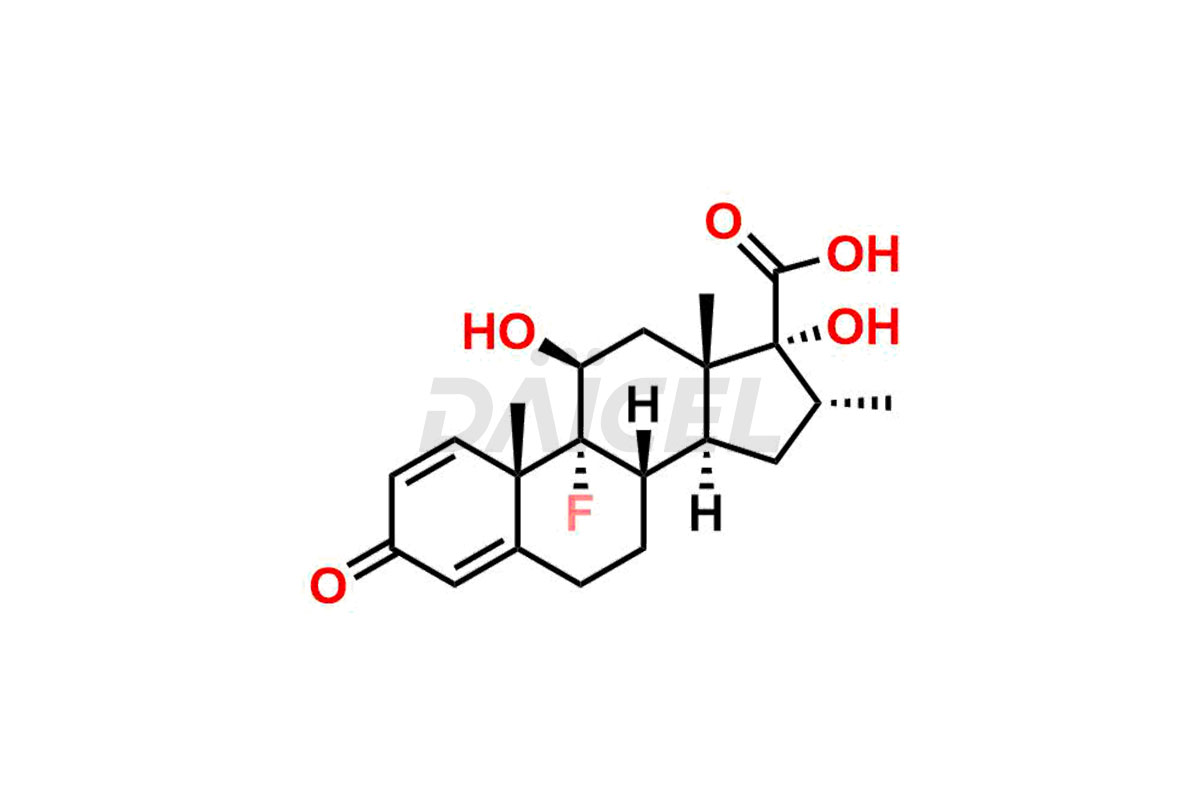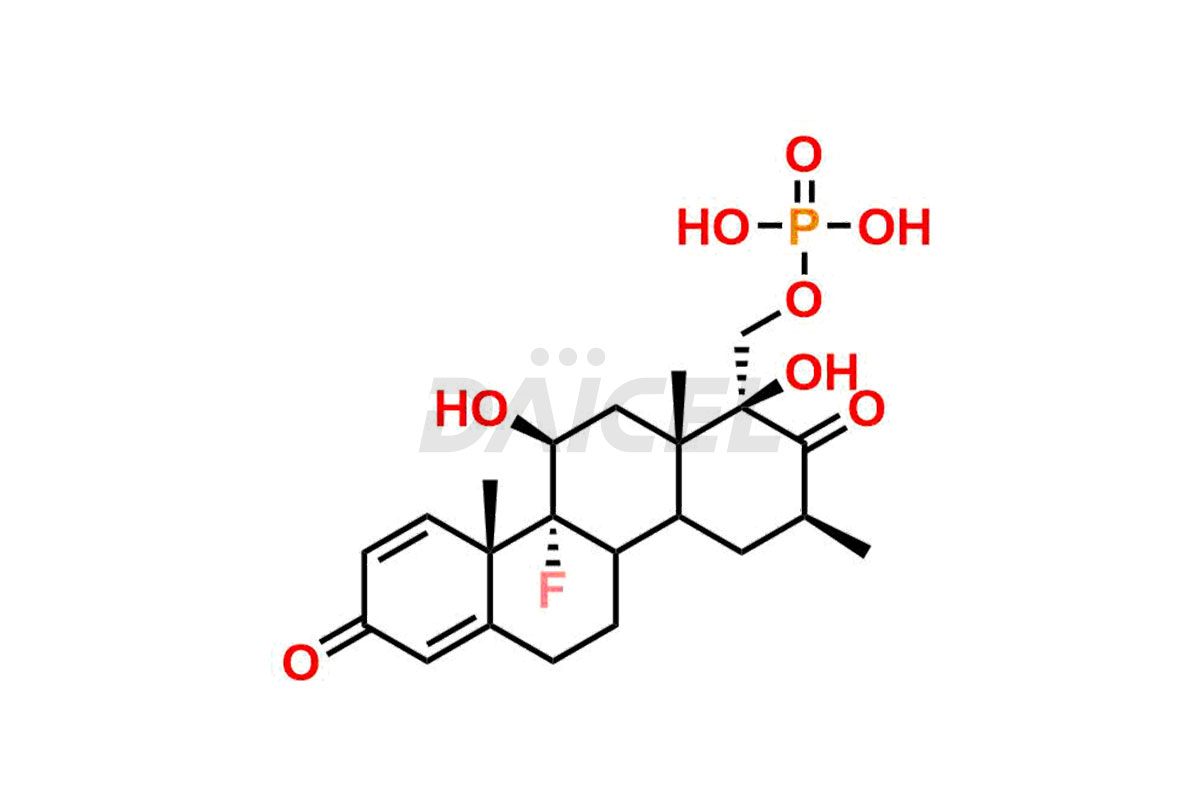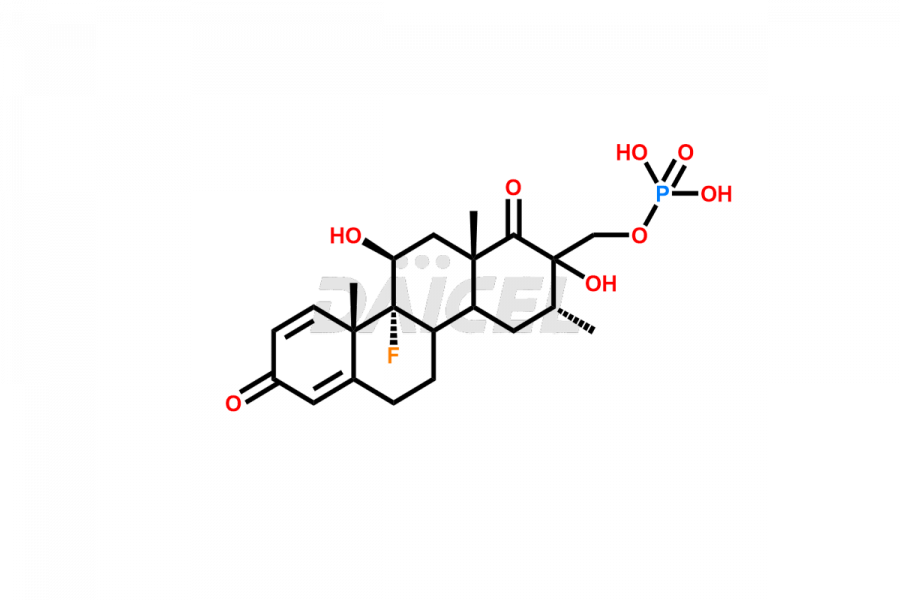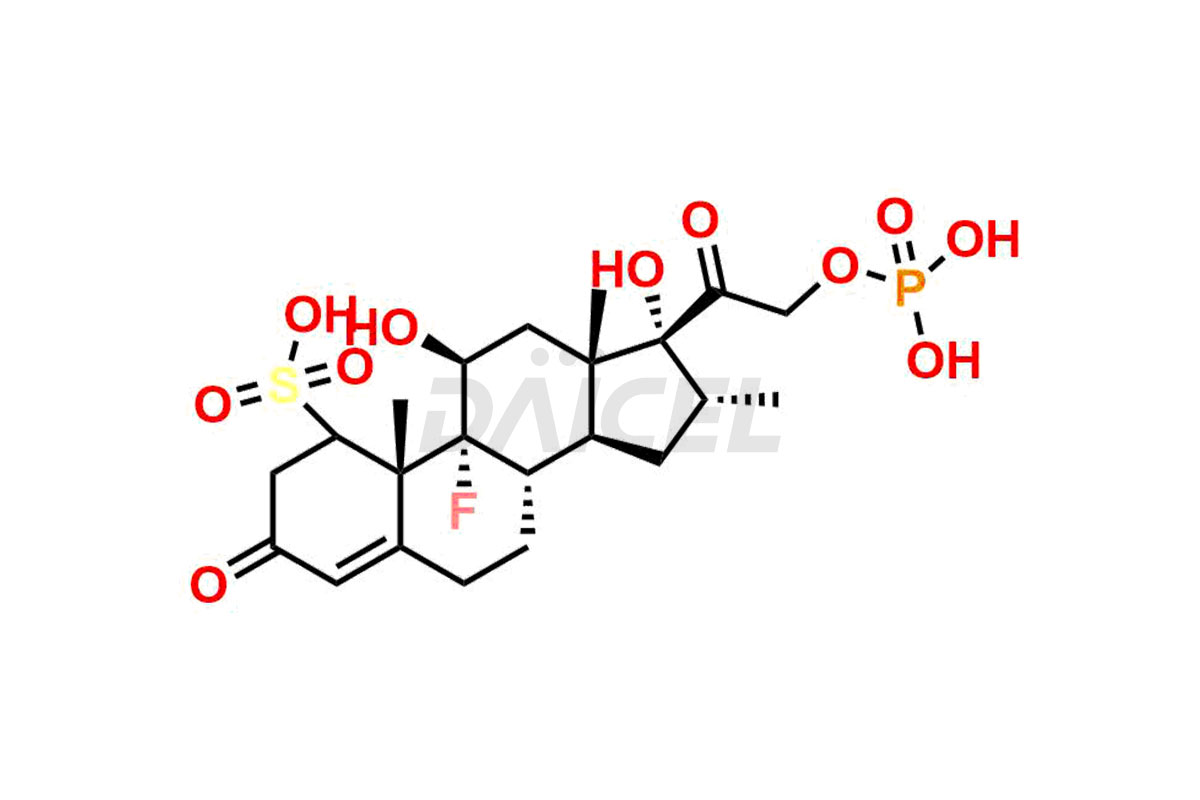Dexamethasone
General Information
Dexamethasone Impurities and Dexamethasone
Daicel Pharma synthesizes high-quality Dexamethasone impurities, 21-Deoxydexamethasone, Dexamethasone Formate, Dexamethasone Impurity, Dexamethasone sodium phosphate diester (Impurity I), Dexamethasone Sodium Phosphate EP Impurity G, Dexamethasone Sodium Phosphate Impurity D, and Dexamethasone sulfite adduct, which are crucial in the analysis of the quality, stability, and biological safety of the active pharmaceutical ingredient Dexamethasone. Moreover, Daicel Pharma offers custom synthesis of Dexamethasone impurities and delivers them globally.
Dexamethasone [CAS: 50-02-2] is a synthetic hormone that mimics the actions of natural corticosteroids produced by the adrenal glands. It has good anti-inflammatory and immunosuppressant properties. It treats leukemia and lymphoma.
Dexamethasone: Use and Commercial Availability
Dexamethasone is a versatile medication widely used for treating various conditions, such as multiple sclerosis, allergies, cerebral edema, inflammation, and shock. It benefits patients having asthma, atopic and contact dermatitis, and drug hypersensitivity reactions. Additionally, it’s effective in treating chemotherapy-induced nausea and vomiting, preventing and treating altitude sickness, and managing spinal cord compression caused by metastases in oncology cases. Dexamethasone is available under various brand names as the sole active ingredient or with other active pharmaceutical ingredients as a combination. The US-FDA-approved, Dexamethasone is available in different routes of administration under the brand names like Decadron, Decaderm, Dextenza, Dexycu Kit, Hemady, Maxidex, Ozurdex, etc.
Dexamethasone Structure and Mechanism of Action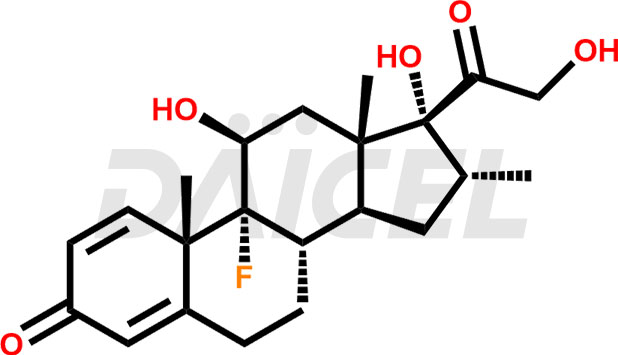
The chemical name of Dexamethasone is 16α-Methyl-9α-fluoro-1,4-pregnadiene-11β,17α,21-triol-3,20-dione. Its chemical formula is C22H29FO5, and its molecular weight is approximately 392.5 g/mol.
Dexamethasone works by attaching to nuclear steroid receptors. In addition, it suppresses neutrophil migration and reduces lymphocyte colony proliferation. It interferes with the activation of NF-kB and apoptotic pathways and contribute to its therapeutic effects.
Dexamethasone Impurities and Synthesis
Dexamethasone can form impurities during its synthesis1 or degradation. The impurities include epimers, diastereomers, and isomers. Incomplete reactions or side reactions during synthesis, as well as from degradation during storage, generate impurities. Dexamethasone impurities can affect its stability, potency, and therapeutic effectiveness. So, strict quality control measures have to be employed during production to ensure that the final product is of high quality and meets the required standards of purity and efficacy.
Daicel offers a Certificate of Analysis (CoA) from a cGMP-compliant analytical facility for Dexamethasone impurity standards, 21-Deoxydexamethasone, Dexamethasone Formate, Dexamethasone Impurity, Dexamethasone sodium phosphate diester (Impurity I), Dexamethasone Sodium Phosphate EP Impurity G, Dexamethasone Sodium Phosphate Impurity D, and Dexamethasone sulfite adduct. The CoA includes complete characterization data, such as 1H NMR, 13C NMR, IR, MASS, and HPLC purity2. We also provide 13C-DEPT and CHN on request. We give a complete characterization report on delivery. Daicel has the technology and expertise to prepare any unknown Dexamethasone impurity or degradation product. We provide labeled compounds to quantify the efficacy of generic Dexamethasone. Daicel offers highly pure isotope-labeled standards of Dexamethasone for bioanalytical research and BA/BE studies with isotope data in CoA.
References
FAQ's
Frequently Asked Questions
What is the purpose of synthesizing Dexamethasone impurities?
Synthesizing dexamethasone impurities help identify and quantify the impurities present in Dexamethasone, a corticosteroid medication used for treating various inflammatory and autoimmune conditions. It is essential for quality control and ensuring the safety and efficacy of the drug.
How are Dexamethasone impurities detected and quantified?
The detection and quantification of Dexamethasone impurities typically involve analytical techniques such as high-performance liquid chromatography (HPLC) or liquid chromatography-mass spectrometry (LC-MS).
Which solvent is or the analysis of Dexamethasone impurities?
DMSO (Dimethyl sulfoxide) or Methanol are common solvents based on the impurity profile of Dexamethasone and its impurities.
What are the temperature conditions required to store Dexamethasone impurities?
Dexamethasone impurities should be stored at a controlled room temperature between 2-8 ⁰C or as indicated on the Certificate of Analysis (CoA).
Note: Products protected by valid patents by a manufacturer are not offered for sale in countries having patent protection. The sale of such products constitutes a patent infringement, and its liability is at the buyer's risk.

